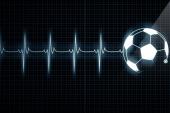Women Less Likely Than Men to Experience SCD During Sports
Women seem to be more protected against sudden death during exercise, which begs the question: what’s the value of screening?

The risk of sports-related sudden cardiac death (SCD) is very low in women, considerably lower than the risk seen in males, according to a new review.
Across a range of studies, sports-related SCD occurred anywhere from five- to 33-fold less frequently in women compared with their male counterparts, Deepthi Rajan, MD (Copenhagen University Hospital, Rigshospitalet, Denmark), and colleagues recently reported in the European Heart Journal.
“This is a good story,” senior investigator Jacob Tfelt-Hansen, MD (Copenhagen University Hospital, Rigshospitalet), told TCTMD. “Females are at very low risk and it’s not related to how many are participating in sports and the type of sports that they do. Really, for whatever the reason, they are somehow protected. It might be related to different hormones, that their heart might somehow be more adaptable to the stresses, or maybe because they’re smarter and know their bodies better. We really don’t know, but it’s a good story.”
Tfelt-Hansen said at their research institute they had noticed that females presented less frequently with SCD related to sports participation. For years, he said, they had wondered if they were the only group who’d seen the disparity between sexes. “What had puzzled us was the fact that we treat men and women equally, especially in Europe, where there is a lot of [preparticipation] sports screening, and we wondered if this was really necessary for females,” said Tfelt-Hansen.
At the time, there was no comprehensive review of the incidence of sports-related SCD in females even though female participation in sports has increased significantly over the past several decades. The researchers found that the incidence of sports-related SCD varies, as does the ratio of cases between men and women. In the US, one study reported that the incidence of sports-related SCD was 0.66 per million athlete-years in females compared with 5.01 events per million athlete-years in males. In a German study, the incidence was 0.2 per million sports-participant years in women compared with 3.60 per million sports-participant years in men.
Difference Seen Across Sports
In their review, the researchers note that SCD, in general, is roughly twice as common in males than females. The larger ratio of sports-related SCD in men compared with women might be the result of differences in the sports performed and/or exercise intensity. However, even in the same sports, the differences persist. For example, in long-distance running, the incidence of sports-related SCD was 0.01 per million female marathoners compared with 0.06 per million male marathoners. Differences between men and women were seen in volleyball, cross-country running, swimming, and basketball.
It might be related to different hormones, that their heart might somehow be more adaptable to the stresses, or maybe because they’re smarter and know their bodies better. Jacob Tfelt-Hansen
To TCTMD, Tfelt-Hansen said there are variations in adaptations to exercise between men and women and these might contribute to the sex-related differences in the incidence of SCD. “For example, if you exercise the heart as a male, there is greater tendency toward hypertrophy,” he said. In addition to the degree of hypertrophy between sexes, there are differences in the amount of right ventricular remodeling, fibrosis, and atherosclerosis resulting from prolonged, high-intensity exercise. The reasons behind these differences might be related to sex-specific variations in hormones, blood pressure, autonomic tone, and the presentation of acute coronary syndromes.
Tfelt-Hansen said that men are more likely than women to be physically active and engage more frequently in higher-intensity exercise or sports. “In my mind, men are more ‘extreme,’ or to put it another way, women are more clever in not going over the edge, which is always a good thing,” he said.
In terms of potential sex differences in the cause of sports-related SCD, structural heart disease is seen less often in females at autopsy than in males. Additionally, coronary artery disease is less commonly the cause of sports-related SCD in women than in men. However, a large proportion of SCDs in women are unexplained at autopsy and may be attributed to sudden arrhythmic death syndrome/channelopathies, according to the reviewers.
Tfelt-Hansen stressed that while sports and/or exercise might serve as a trigger for SCD—either during the event or in the couple of hours after it ends—but Danish data suggest that active people are at a much lower risk of SCD than age- and sex-matched individuals in the general population. In two Danish studies, for example, nonactive individuals were at a threefold higher risk of SCD than those who were physically active.
Preparticipation sports screening remains a polarizing topic in the cardiology community, with certain countries, specifically Italy, making it mandatory for all athletes to undergo comprehensive testing before they can participate. Different organizations, such as the European Society of Cardiology and American Heart Association/American College of Cardiology, recommend screening for competitive or professional athletes, but differ in their screening protocols. In the US, for example, a resting 12-lead ECG isn’t recommended for mass screening.
As to the cost-effectiveness of screening athletes, particularly female athletes, Tfelt-Hansen said he’s not sure there’s value in it. Focusing instead on comprehensive cardiovascular disease prevention, such as tackling diabetes, hypertension, or high cholesterol levels, might be a better bang for public health dollars. “I don’t think screening of female athletes is the best way to spend our resources,” he said.
Michael O’Riordan is the Managing Editor for TCTMD. He completed his undergraduate degrees at Queen’s University in Kingston, ON, and…
Read Full BioSources
Rajan D, Garcia R, Svane J, Tfelt-Hansen J. Risk of sports-related sudden cardiac death in women. Eur Heart J. 2021;Epub ahead of print.
Disclosures
- Tfelt-Hansen reports no relevant conflicts of interest.





Comments